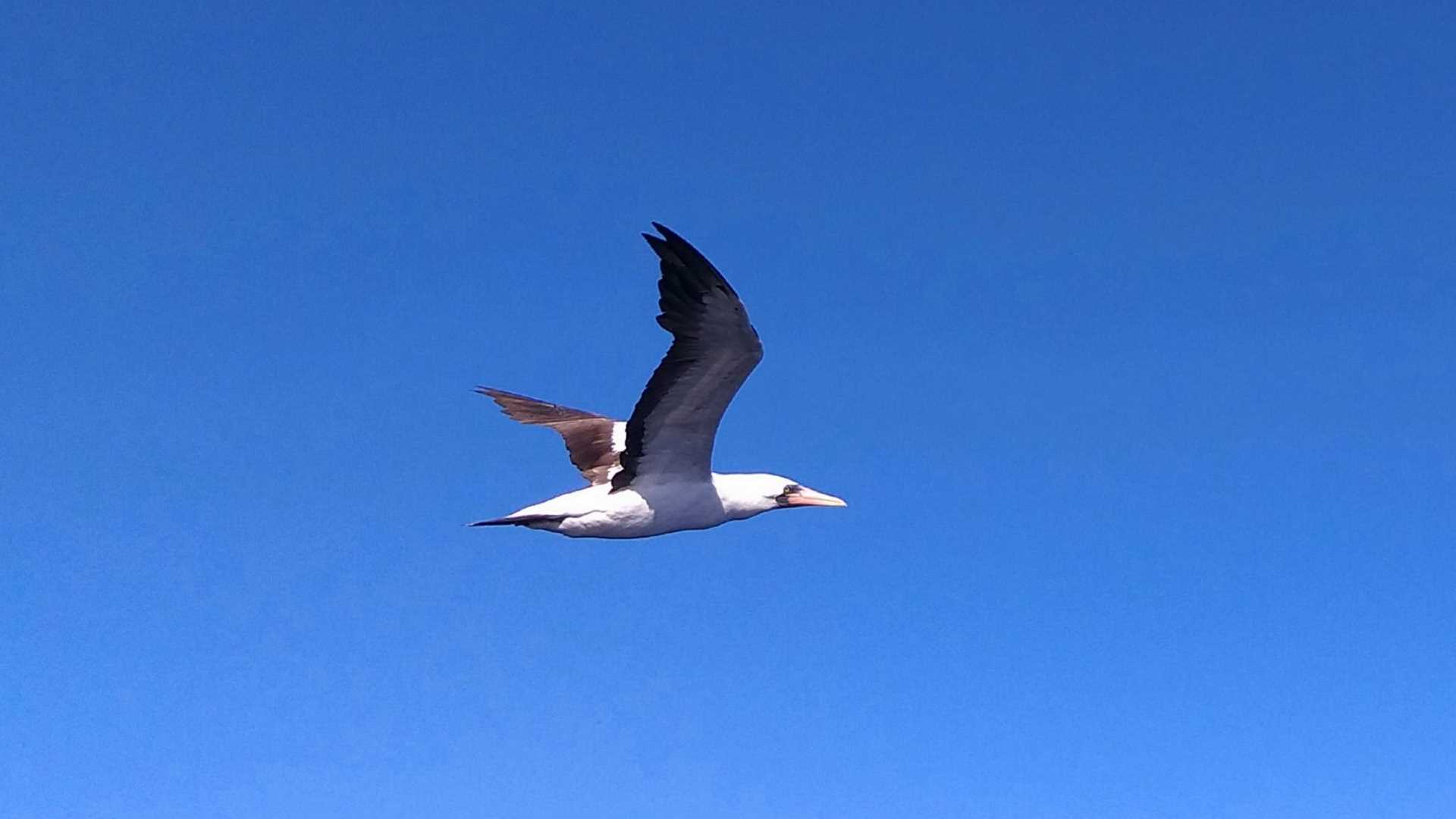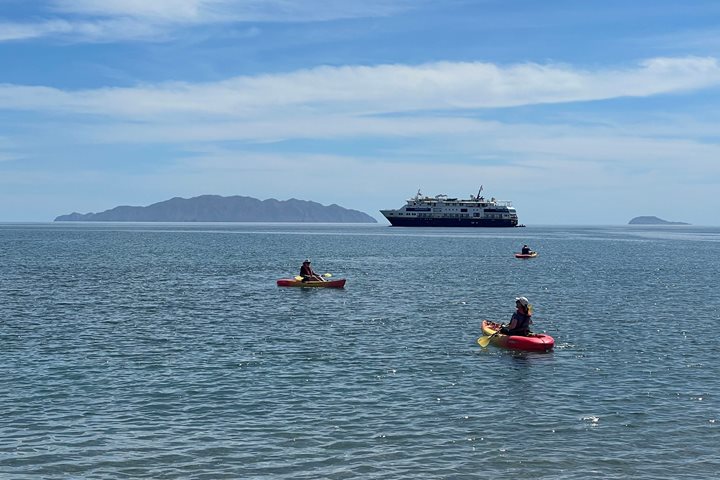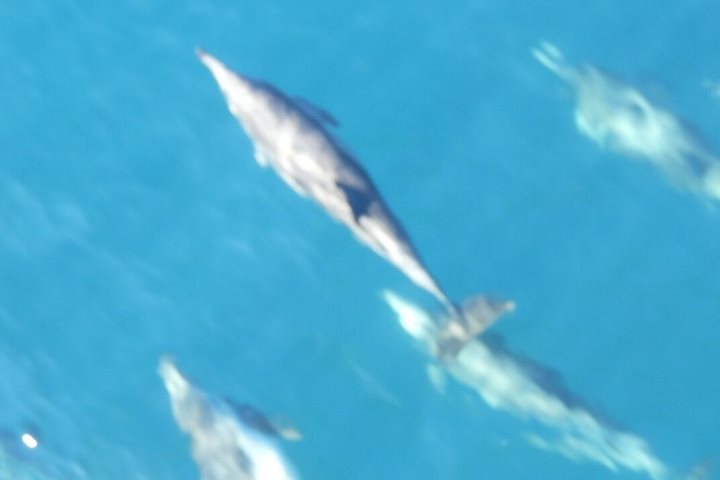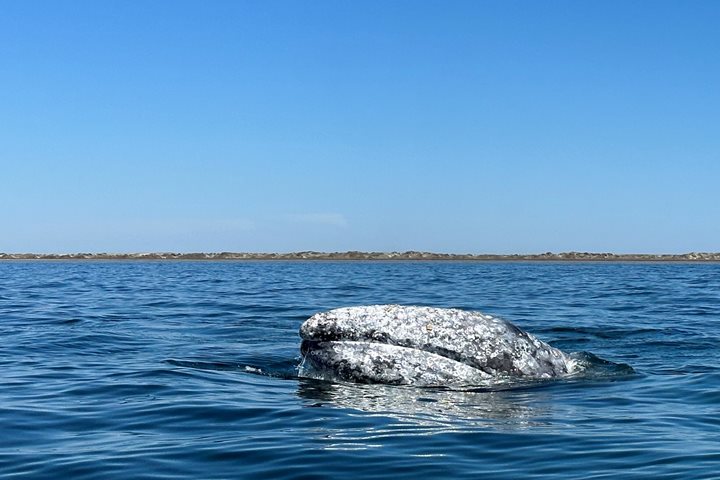For the second part of our expedition, National Geographic Venture navigated along the Pacific side of the Baja California Peninsula from Los Cabos to the Magdalena Bay complex. This morning, we observed several blows of gray whales. This is the southernmost nursing lagoon for these amazing animals, and we had perfect weather conditions for whale-watching from the ship. The presence of several masked and Nazca boobies, not commonly seen in this area, was a highlight. We enjoyed great vistas of the landscape, with Santa Margarita Island flanking Almejas Bay and Magdalena Island flanking the largest bay. We also enjoyed seeing the winding, shallow channels of the north side, where mangrove communities are abundant. While cruising, guests enjoyed a presentation on the kleptoparasitic behavior of the magnificent frigatebirds, which are abundant in the bay complex.
By noon, National Geographic Venture dropped the anchor inside the bay. Groups of guests and naturalists explored the sand dunes to see birds, to take photographs, or to get to Sand Dollar Beach on the Pacific side. The beauty of the coastal vegetation on the dunes mesmerized us—unicorn plants, evening primroses, milkweeds, sand verbenas and sea purslanes. On Sand Dollar Beach, we found over a hundred pelican carcasses scavenged by a solitary coyote. Among the birds, we saw caracaras, a peregrine falcon and a northern Harris. We also spotted hundreds of sandpipers, cormorants, pelicans, gulls, frigatebirds and other interesting inhabitants of this really pristine and beautiful place.







